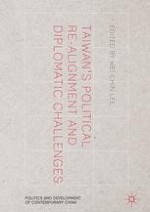2019 | OriginalPaper | Buchkapitel
11. Beyond Diplomacy: The Political Economy of Taiwan’s Relations with Southeast Asia
verfasst von : Samuel C. Y. Ku
Erschienen in: Taiwan’s Political Re-Alignment and Diplomatic Challenges
Verlag: Springer International Publishing
Aktivieren Sie unsere intelligente Suche, um passende Fachinhalte oder Patente zu finden.
Wählen Sie Textabschnitte aus um mit Künstlicher Intelligenz passenden Patente zu finden. powered by
Markieren Sie Textabschnitte, um KI-gestützt weitere passende Inhalte zu finden. powered by
